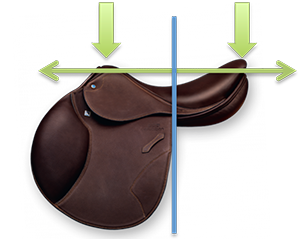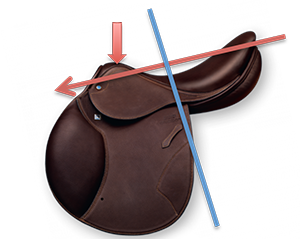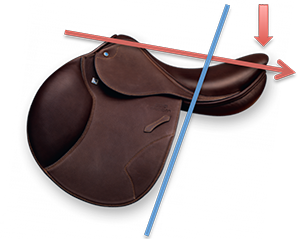For a pdf of this article, click here.
A properly balanced saddle is the result of a properly fit saddle. A poorly balanced saddle is usually the result of a poorly fit saddle. Tree width, panel thickness, saddle position, and the pads you use are what affect the balance of your saddle. An out of balance saddle can be seen visually but also can be felt by the rider and the horse. Your horse has very sensitive nerves and muscles that an out of balance saddle will put undue pressure on. The pommel low saddle will balance more of the riders weight forward onto the accessory nerve and trapezius muscles. A saddle that is pommel high will balance more of the riders weight back onto the lumbar of the horse causing pain in the lumbar region. The rider feels the unbalance by being tipped forward in the pommel low saddle and tipped back into a chair seat in a pommel high saddle. Correcting an out of balance saddle improperly can cause more problems and is best left to a professional saddle fitter. Stübben saddle fitters are trained in identifying saddle fit issues that lead to an unbalanced saddle. With so many options in saddle fit, correcting these scenarios can get very confusing without the proper training. Next time you take a look at your saddle and something doesn’t look right give a Stübben saddle fitter a call to help get you and your horse back in balance.

A balanced saddle evenly distributes the riders weight across the entire length of panel and allows the rider to find a naturally balanced position.

A saddle with a low pommel will balance most of the riders weight forward on your horse’s accessory nerve and trapezius muscle. The rider’s position is tipped forward and into the pommel of the saddle with the leg behind the balanced position.

The pommel high saddle will balance the rider’s weight onto the lumbar of the horse and rock the rider back onto the cantle of the saddle in a “chair position.”

